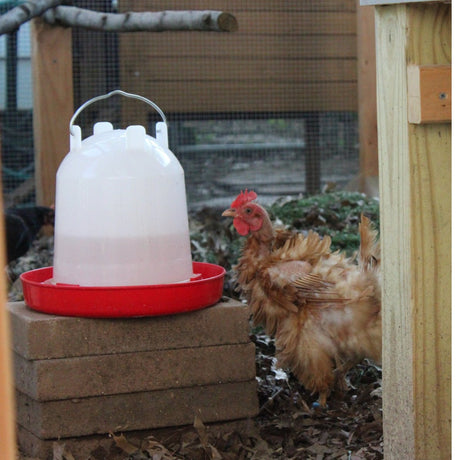Looking for a compact and rewarding way to produce fresh eggs and meat? Raising quail might be your answer. These birds are perfect for small backyards and urban homesteads. In this guide, we’ll explore everything you need to know about how to raise quail, from their benefits to housing, feeding, egg laying, and more.
Benefits of Raising Quail
- Efficient use of space: You can raise quail in a small backyard or even a garage. Quail require just 1 square foot per bird.
- Fast maturity: Coturnix quail start laying eggs at 6-8 weeks old and can be ready for meat processing at 7-8 weeks.
- Prolific egg layers: Expect around 300 eggs per year per hen, especially during their peak laying period in the first 12–18 months.
- Quiet and discreet: Male quail make soft warbles; hens are nearly silent.
- Low regulations: Many urban areas that ban chickens allow quail.
- Hardy and adaptable: They tolerate a wide range of temperatures when sheltered properly.

Getting Started with Quail
Before raising quail, decide your purpose: eggs, meat, pets, or breeding. Then choose your starting point:
- Fertile eggs (for incubation)
- Chicks (require brooding)
- Adult birds (ready to lay)
Coturnix quail are ideal for beginners due to their docile nature and rapid production.
Quail Housing and Setups
Quail need secure, well-ventilated, and predator-proof housing. Choose from cages, hutches, or mobile pens. Key housing tips:
- Space: 1 sq. ft. per bird minimum.
- Cage height: 8-10 inches (to avoid injury from flushing).
- Ventilation: Prevent ammonia buildup.
- Predator-proofing: Use hardware cloth; secure underneath cages.
- Egg collection: Slanted floors allow eggs to roll out, keeping them cleaner and easier to collect.
- Bedding: Pine shavings, sawdust, or sand.
- Winter protection: Keep dry with added bedding or move to an indoor shelter. Some keepers move birds into layer cages post-molt in fall.
Avoid free-ranging quail, they’re skittish and vulnerable.

Feeding and Watering Quail
Proper nutrition is crucial:
- Chicks (0-7 weeks): Game bird or turkey starter with 25-30% protein.
- Adults (7+ weeks): Layer crumble with 18-22% protein. Some keepers mix 30% game bird starter with lower-protein feeds to reach 22–27%.
- Calcium: Offer crushed oyster shells or eggshells to laying hens.
- Water: Use shallow waterers or nipple systems. Keep clean and elevated.
- Grit: Provide if feeding whole grains or greens.
- Treats: Offer insects, seeds, or leafy greens in moderation.
A deficiency in protein may lead to feather picking. Monitor and adjust accordingly.

Raising Quail Chicks
Chicks are fragile in the first few weeks:
- Brooder temp: 95°F in week 1, reduce by 5°F each week.
- Cleanliness: Spot clean daily; change bedding weekly.
- Drowning prevention: Use shallow dishes or add marbles.
- Feathering: Fully feathered by week 4.
- Flight: Start flying by week 3, cover brooders or raise walls.
Common Quail Breeds for Beginners
Coturnix (Japanese quail) is the most popular breed. Feather-sexable varieties include:
- Pharaoh (Wild-type)
- Egyptian
- White-winged
- Pearl
Sex at 3-6 weeks based on breast speckling (females = spotted).
Raising Quail for Eggs
Want a steady supply of eggs? Ensure:
- 3-5 hens per male (or no males if not breeding).
- High-protein diet and calcium source.
- Clean, quiet environment.
- Consistent light cycle (14-16 hrs/day). Use a timer to automate e.g., 6 AM to 8–10 PM.
Coturnix hens usually lay eggs in the evening and do so wherever they are standing. Cages with roll-out trays simplify egg collection and keep eggs cleaner.
Egg production is most reliable in the first 12–18 months. Plan to replace hens by 14–20 months to maintain productivity. Remove poor producers to optimize feed cost.

Egg Quality Control
New layers often produce irregular eggs: soft shells, double yolks, or small yolkless eggs ("fairy eggs"). These issues usually resolve with regular laying.
Persistent soft shells signal calcium deficiency. Supplement diets with crushed oyster shell or eggshell.
Raising Quail for Meat
Jumbo Coturnix are ideal for meat:
- Harvest at 7-8 weeks.
- All dark meat, flavorful and easy to cook.
- Use scissors, buckets, and a hose to process.
Quail meat is considered gourmet and has growing demand.
Troubleshooting & Common Issues
- Aggression: Separate fighting males. Maintain a proper male-to-female ratio.
- Odor/cleanliness: Clean cages weekly. Ensure dry bedding.
- Health: Watch for lethargy, diarrhea, or feather loss. Keep environment dry and stress-free.
- Short lifespan: 2-3 years. Plan for staggered hatching to maintain stock.
Sustainability: Incubating and Breeding Quail
With a male in your flock, you can:
- Collect fertile eggs
- Incubate at 99.5°F, 45% humidity (first 14 days), then 55-60% for the last 3 days
- Hatch in 17-18 days
Maintain your flock and control genetics for better productivity.
Quail vs Chickens: Which Is Better for You?
| Feature | Quail | Chickens |
|---|---|---|
| Space needed | 1 sq. ft. | 8-10 sq. ft. |
| Noise | Quiet | Noisy roosters |
| Maturity age | 6-8 weeks | 16-20 weeks |
| Egg production | 300/year | 250/year |
| Free-range option | No | Yes |
| Lifespan | 2-3 years | 5-8 years |
Final Thoughts: Is Quail Raising Right for You?
Raising quail offers a fast, efficient way to produce food at home. Whether you're interested in fresh eggs, tender meat, or simply enjoy caring for poultry, quail are a practical and profitable option. Start small, learn the basics, and expand as you gain confidence.
Written by:








